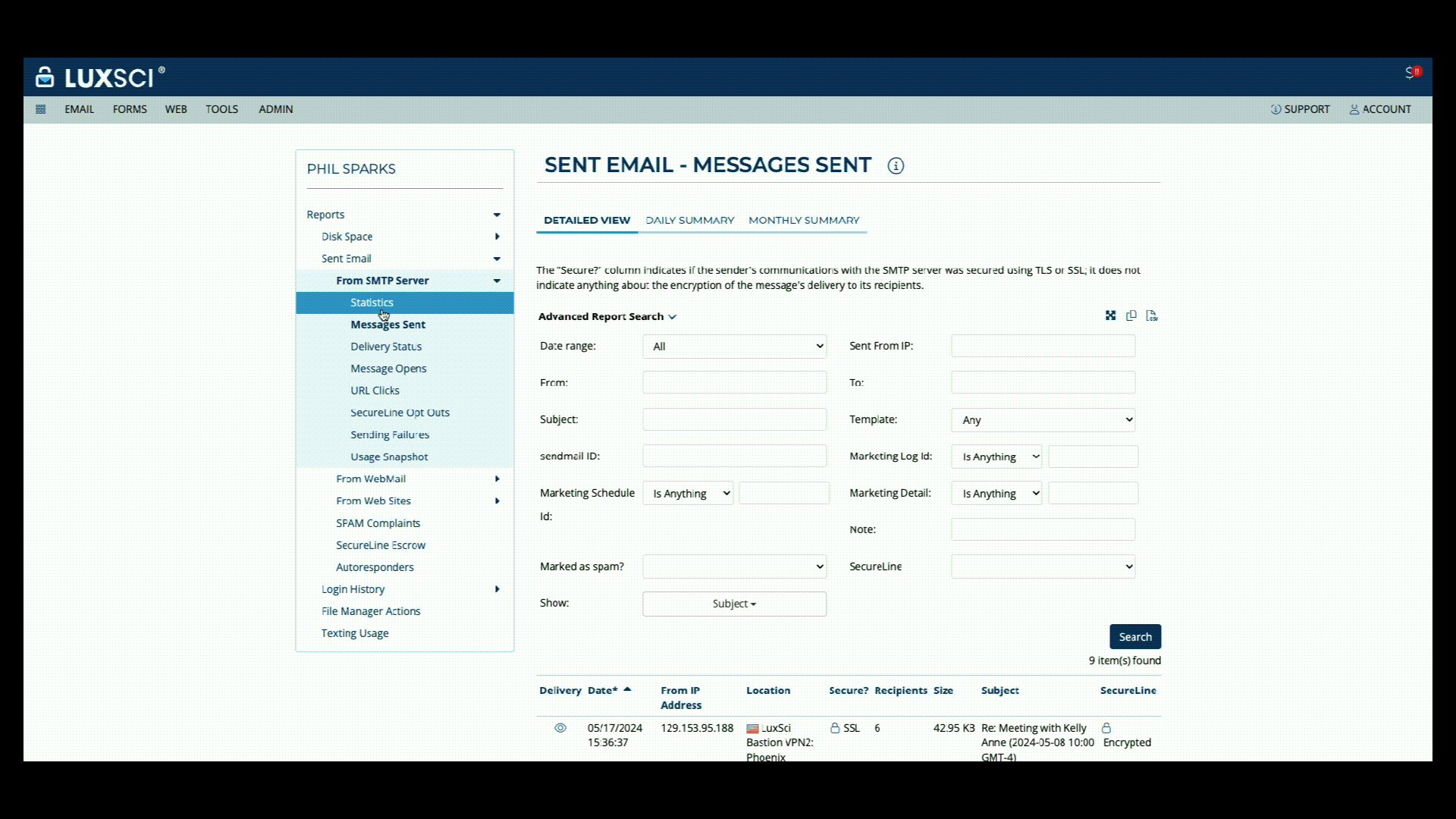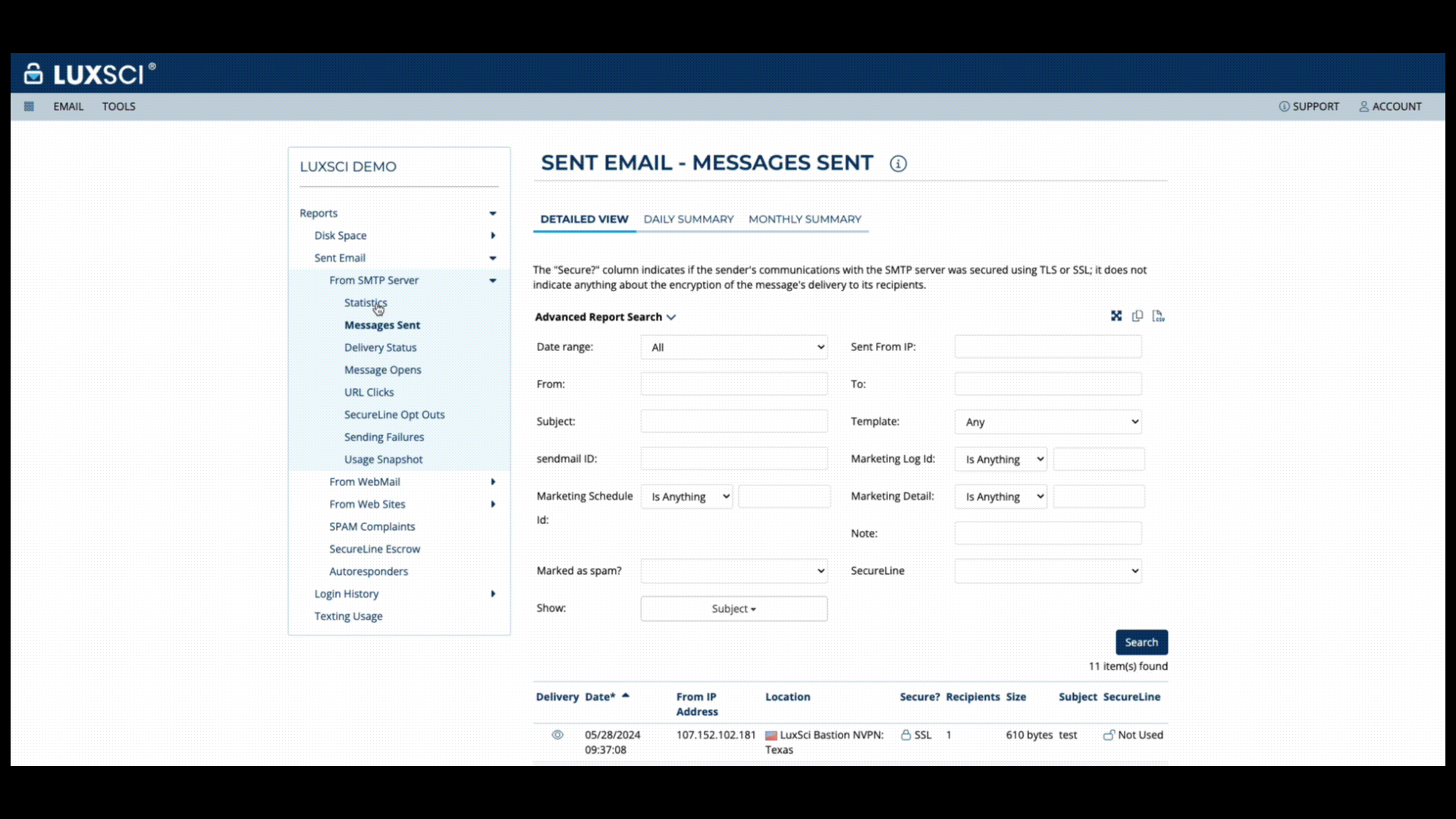If you’re a healthcare marketer looking to make your email campaigns more intelligent, automated, and secure, now’s the time to look at LuxSci Secure Marketing.
Whether you’re new to LuxSci or a long-time user, we’re pleased to announce that our new Automated Workflows capability is now available in the latest version of LuxSci Secure Marketing.
LuxSci Secure Marketing is a HIPAA compliant email marketing solution designed specifically for healthcare providers, payers, and suppliers. The solution enables organizations to proactively reach patients and customers with secure, compliant email campaigns that drive increased engagement, leads, and sales.
What Are Automated Workflows?
Traditional ‘one-off’ campaigns can work, but they’re limited. What if you could set up an intelligent healthcare engagement journey that adapts based on how your patients and customers interact with each email? That’s where LuxSci Automated Workflows come in.
An Automated Workflow is a sequence of actions—or Steps—that a Contact moves through over time. Each Step can perform a specific function, such as sending an email, waiting a specified amount of time, pausing until a particular event occurs (like a message open or link click, or even an update to the Contact via an API call from your systems), evaluating conditions to take different branches. This could include saving the Contact to a particular Segment, or jumping to another Step or Workflow. As a result, automated workflows can support personalized, dynamic, and highly targeted healthcare engagement strategies.
A Look Inside LuxSci’s Automated Workflows Capability
LuxSci’s Automated Workflows—known in other platforms as Drip Campaigns, Customer Journeys, or Marketing Automation—enable you to build communications sequences based on Contact attributes, actions and/or where they are in a particular sequence or journey. Automated workflows put you in complete control of:
- When each message is sent
- Who gets what based on behavior, needs, and attributes
- Which path or branch a Contact takes
Smart Event-Based Branching and Conditions
You can branch your Workflows to trigger targeted communications based on user attributes or engagement events for more guided, relevant journeys, with better outcomes. This includes actions based on:
- Email opens
- Link clicks
- Custom field values
- API-triggered behaviors
Wait Steps and Real-Time Triggers
You can pause the Workflow or sequence for each Contact until something specific happens—like the patient logging into a portal or clicking on a resource–and set custom time intervals or dates before the next action in the Workflow kicks in. You can also wait for a specific day of the month or week and/or a specific time range during the day to execute the next Step in the Workflow, e.g., Noon-2PM Central Time on Thursdays.
“Go To” Navigation Across Steps
Need a Contact to jump to a different Step or another Workflow entirely? You can do that with LuxSci Automated Workflows. If the same Step has already been visited, LuxSci Secure Marketing prevents loops automatically.
Add to Segment
Automatically add Contacts to segments as they reach specific Steps in your Workflows. Later, you can use these segments with the LuxSci API, triggers, or additional Workflows to take targeted actions, or download the list for contacts from the LuxSci UI or API for other uses.
LuxSci Automated Workflows: How They Work
Step 1: Create an Automated Workflow
Users start by creating an Automated Workflow—a container for your automated patient or customer journey. You can customize:
- Sender name, sender address, reply-to address
- Workflow and email queue priority over other Workflows and messages sent

Step 2: Add Steps to the Workflow
Steps are part of a Workflow and are executed based on the Contact’s path through the Workflow. Each Workflow can be customized based on different Step types that define what happens as a Contact progresses. Step types include:
- Send Email: Automatically deliver personalized messages using your existing templates.
- Wait for Time: Pause contact progression for a set duration, until a specific date, or relative to a Contact’s field (e.g., appointment time).
- Wait for Event: Delay until a specific condition is met, such as an email being opened or a custom filter passing.
- Branch: Evaluate one or more conditions and send Contacts down different paths based on matches or fallbacks.
- Go To: Jump forward or backward within a Workflow, or even switch to a different Workflow entirely.
- Add to Segment: Dynamically assign Contacts to segments for future targeting or reporting.
- End Workflow: Mark a Contact’s journey as complete

Step 3: Trigger the Journey
Workflows can start when you either send all of the Contacts in a list or segment into the Workflow or when a specific trigger fires. This could be someone joining a list, submitting a form, reaching a date or milestone, such as a birth date, or meeting a condition.
Automated Workflow Example
For a new health plan enrollment Workflow, for example, you could start with an automated step that sends an email to those Contacts required to re-enroll by a certain date, with links to either sign up for an education webinar, enroll at a patient portal or be sent additional information by email. Depending on the Contact’s action in the email, the Contact follows a Branch that automates the next step in the workflow. In this case, if the Contact requests additional information, the next Step to send a follow-up email with more information on plan enrollment is executed, and so on.

Healthcare Use Cases for LuxSci Automated Workflows
LuxSci’s Automated Workflows can optimize a wide range of healthcare use cases, including:
- New Member Onboarding: Introduce new Contacts to your brand with a structured onboarding flow.
- Re-Engagement Campaigns: Automatically follow up with inactive Contacts based on engagement or inactivity windows.
- Appointment Follow-Up Sequences: Send reminders, tips, and satisfaction surveys after a visit.
- Preventative Care Communications: Communicate regular and timely information that drives greater patient participation in healthcare journeys with better outcomes.
- New Product Announcements or Upgrades: Keep patients and customers informed on the latest updates, upgrades and new product offers, such as medical equipment.
- Event Reminders & Follow-Ups: Send timely updates or post-event content based on date-based triggers or actions taken.
- Segmentation & Tracking: Automatically assign Contacts to segments as they progress through Steps for targeting or reporting.
- Behavioral Nurturing: Tailor messaging paths based on clicks, opens, or custom field data.
- Multi-Campaign Journeys: Connect multiple Workflows together to build larger, more modular strategies.
- Patient Education Campaigns: Walk patients through disease management, treatment protocols, or lifestyle changes.
Benefits of LuxSci Automated Workflows
Intelligent Contact Nurturing at Scale
Automated workflows are your new digital marketing assistant, nurturing leads, checking conditions, and adapting communications sequences to each user based on their engagement and actions.
Personalized Touchpoints with Full Control
Each branch, delay, and trigger enables you to deliver content that feels personalized and relevant without all the manual and repetitive work to tailor communications.
Reporting, Metrics, and Optimization
LuxSci’s reporting capabilities empower you to monitor the end-to-end healthcare communications journey, gaining insights at every step, including:
- Who received what
- Who engaged and how
- Where drop-offs happen
- The engagement achieved with each Step in the Workflow
From there, you can use the behavior-based intelligence to build smarter Workflows with ongoing data-driven refinements, including adjusting content and timing based on what works (and what doesn’t).
Why LuxSci for Automated Workflows
LuxSci Secure Marketing and our newly enhanced Automated Workflows deliver a powerful, unique and secure healthcare marketing solution anchored in the following:
- Secure Email: Comprehensive email security for data in transit and at rest, helping ensure HIPAA compliance and enabling the usage of PHI in emails for personalization and increased engagement.
- Secure Infrastructure – Every message, contact, and action is protected by a secure, compliant platform architecture.
- Enterprise-Scale – Workflows are optimized to handle millions of contacts with high concurrency and efficient processing.
- Flexible Branching & Loop Prevention – Contacts can’t get “stuck” in loops, they are intelligently tracked and marked complete if already engaged.
- Modular, Reusable Logic – Workflows can call each other to create structured, scalable automation plans.
- Detailed Contact Tracking – View per-step Contact counts, both currently active and historically processed.
Improve Performance with Automated Workflows Today!
If you’re ready to move from static campaigns to personalized healthcare engagement, LuxSci’s Automated Workflows are here to help you easily create, scale and automate your email marketing campaigns and workflows—all while staying 100% HIPAA compliant.
Contact us today to learn more.
FAQs
1. What is the difference between a Campaign and an Automated Workflow?
Campaigns are typically single email blasts to a particular set of contacts. Automated workflows are multi-step journeys intended to drive actions that adapt to recipient behavior over time.
2. Can I use Automated Workflows for re-engagement campaigns?
Absolutely. They’re ideal for winning back inactive Contacts with personalized, timely messages.
3. Are Automated Workflows HIPAA compliant like the rest of LuxSci solutions?
Yes. All Workflows inherit the same strict security and compliance controls that are part of all LuxSci solutions.
4. Can a Contact re-enter the same Workflow multiple times?
No. Once a contact has completed or exited a workflow, re-entry is prevented to avoid loops or duplication.













